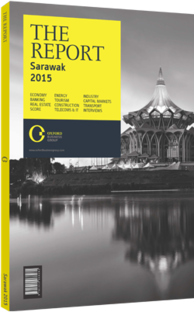Support to preserve Sarawak’s batik-making tradition improves livelihoods of artisans
The art of batik making is an ancient one, with roots tracing back to the sixth and seventh centuries and embodying a cultural tradition spanning multiple continents. Today, the batik-making technique is present and thriving across much of South-east Asia, China, India and Africa. Nowhere is the fabric more ubiquitous, however, than in the maritime South-east Asian nations of Malaysia and Indonesia, where it maintains its firm place in all spheres of life, from the business-related to the familial.
Ancient Technique
In the Bornean state of Sarawak, the batik-making technique is most notably manifest in its tradition of songket weaving. The term songket itself refers directly to a style of fabric which is hand-woven in numerous steps that require a high degree of skill and precision. The Sarawakian technique of songket weaving has its roots in methods acquired from the Sultanate of Brunei Darussalam during the pre-Brooke era.
There are 11 distinct steps that embody songket weaving in the Sarawakian style, all of which require direct human input from the weaver and cannot be replicated by machines. The pattern design is first intricately planned either by hand or by computer, laying the foundation from which the weaver works. After the design is complete, the cotton and silk threads are dyed and hung to dry, following which they are unwound on a spindle and wound again onto bobbins. The resultant threads are warped, arranged lengthwise on a loom and wound. The threads are then sleyed, woven and tied in multi-step processes requiring dexterity and skill.
Unique Utilisation
The Sarawakian songket is unique in its utilisation of supplementary weft weaving, in which patterns are created on the fabric using metallic threads through a painstakingly slow and precise process. The finished fabric is unreplicable in its quality, durability and consistency.
While songket weaving has been widely practised in Sarawak and across Malaysia for decades, in the present day initiatives are under way to preserve and reinvigorate the craft, framing it not only as a traditional skill but also as a viable form of commerce and a source of income.
The Tanoti House in Kuching, for example, was established in 2008 with the goal of housing and developing skilled songket weavers while developing the craft as a viable career option and spurring the craft industry. In the era of mechanisation, many forms of traditional craft including songket weaving have been abandoned in favour of less intensive sources of income. These initiatives, however, provide skilled artisans with the requisite infrastructure to justify their pursuit of craft and, in the larger scheme of things, serve to preserve this local cultural heritage from marginalisation and extinction.
Artisan Industry
The majority of weavers found in establishments such as the Tanoti House are rural women from the villages surrounding Kuching such as Kota Samarahan, Gedong and Serian. Often initially self-employed in their villages and running their own workshops, weavers are increasingly finding it difficult to sustain themselves and their families by relying on the knowledge of a specialised craft in a rural locale with limited capacity.
Under these renewed efforts to transform a decades-old skill into a viable industry, weavers are housed with colleagues of varying skill levels under a mentor-mentee system that exponentially propagates expertise over time. The standards of these houses are stringent and unrelenting, requiring a degree of perfection in each piece of fabric for which the local songket is famous. Despite the rigorous quality standards, current day Sarawakian songket weavers are now embracing the modernisation of the art and are admitting new ideas into the time-honoured craft. The result is not only the maintenance and progress of the local Sarawakian culture, but also a critical means of integrating skilled artisans into the ever-evolving Sarawakian economy.
You have reached the limit of premium articles you can view for free.
Choose from the options below to purchase print or digital editions of our Reports. You can also purchase a website subscription giving you unlimited access to all of our Reports online for 12 months.
If you have already purchased this Report or have a website subscription, please login to continue.

